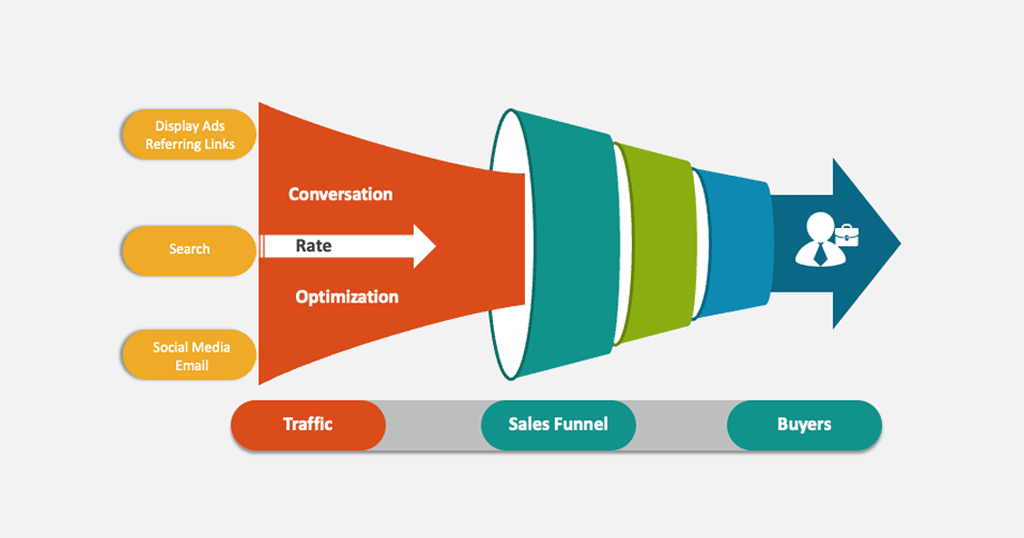Conversion Rate Optimization (CRO) is both an art and a science. It is a strategic process of testing and refining website elements to maximize the percentage of visitors who convert into customers. But optimizing conversion rates is more than just improving percentages; it’s about aligning digital and business strategy with data-driven decisions for maximum impact.
CRO Best Practices
A well-executed Conversion Rate Optimization strategy is rooted in data analysis and user behavior insights. Every visitor’s journey tells a story, and it’s up to skilled marketers to listen and refine the experience. Here’s how businesses can optimize their conversion rates effectively:
1. Analyze Data & Use Heatmaps
-
- Understanding traffic patterns is essential to Conversion Rate Optimization success.
-
- Web analytics tools, heatmaps, and user session tracking help identify where visitors engage or drop off.
-
- Heatmaps reveal which page elements receive the most attention, while traffic reports highlight underperforming pages that may require content or design improvements.
2. Improve Page Speed & UX
-
- Slow loading times significantly hurt conversion rates.
-
- Optimizing page speed enhances the user experience and keeps visitors engaged.
-
- A well-structured, mobile-responsive, and streamlined website ensures a seamless customer journey that drives conversions.
3. Use Clear Calls-to-Action (CTAs)
-
- CTAs should be strategically placed to instruct users toward desired actions.
-
- Personalized and action-oriented messaging can significantly boost conversion rates.
-
- Not all visitors are at the same stage of the buying journey—providing CTAs suited to their needs improves conversions.
4. Leverage A/B Testing & Hypothesis Testing
-
- A/B testing and multivariate testing help marketers experiment with different versions of a webpage.
-
- By comparing variations, businesses can determine the best-performing design, messaging, and CTAs.
-
- Data-backed decisions optimize conversion rates and minimize guesswork.
5. Utilize Social Proof
-
- Customer testimonials, reviews, and case studies establish trust and credibility.
-
- Displaying positive customer experiences and industry certifications reassures hesitant visitors and encourages conversions.
6. Optimize for Mobile
-
- Mobile commerce is rapidly growing—ensuring a seamless mobile experience is critical.
-
- Responsive designs, fast load speeds, and simplified navigation improve usability and reduce bounce rates.
7. Identify & Refine Conversion Rate Optimization Goals
-
- Establish clear conversion goals that align with business objectives.
-
- Continuously optimize the conversion funnel to eliminate friction points and improve the path to conversion.
8. Use AI & Personalization
-
- AI-driven recommendations personalize the user experience and increase engagement.
-
- Smart content suggestions, dynamic landing pages, and tailored product recommendations can guide users toward a purchase decision.
9. Reduce Bounce Rate with Relevant Content
-
- High bounce rates indicate content misalignment with user intent.
-
- Providing engaging, relevant, and well-structured content keeps visitors on-site longer and encourages conversions.
10. Retarget Visitors with Tailored Offers
-
- Retargeting campaigns recapture lost visitors and drive them back to the website.
-
- Personalized follow-up emails and dynamic ads remind visitors about products/services and encourage them to convert.
Essential Optimization Metrics
Systematic measurement is key to continuous improvement. Here are some essential Conversion Rate Optimization metrics that provide valuable insights:
-
- Conversion Rate: (Conversions / Visitors) x 100
-
- Bounce Rate: The percentage of visitors who leave without interacting
-
- Average Session Duration: How long visitors stay on your site
-
- Click-Through Rate (CTR): Percentage of users clicking on specific CTAs
-
- Customer Acquisition Cost (CAC): The cost of converting a new customer
Key Benefits of Optimizing Your Site for Conversions
Conversion Rate Optimization isn’t just about improving website performance—it’s about driving overall marketing success. Here’s why it’s essential:
✅ Increased Customer Engagement – Data-driven optimizations create better user experiences, keeping visitors engaged and exploring.
✅ Higher Website Revenue – By refining messaging, layouts, and CTAs, businesses convert more visitors into paying customers without increasing ad spend.
✅ Improved ROI – Maximizing the value of each visitor’s experience ensures the best possible return on marketing investments.
Key Skills for Conversion Rate Optimization Success
Successful Conversion Rate Optimization requires a blend of analytical and creative expertise, including:
-
- Proficiency in web analytics tools (Google Analytics, Hotjar)
-
- Experience with A/B testing platforms (Optimizely, VWO)
-
- Deep understanding of user behavior and psychology
-
- Data analysis for performance tracking and insights
-
- Digital design and UX optimization
-
- Persuasive copywriting to enhance messaging
Why AIS Media?
At AIS Media, we believe Conversion Rate Optimization is both an art and a science, which supports any SEO or PPC campaign. We don’t just rely on intuition—we test, analyze, refine, and test again. Our data-driven approach ensures that every digital effort is optimized for maximum impact. It’s not just about tweaking a webpage—it’s about continuously improving business results.
Ready to optimize your website’s conversion potential? Let’s talk! Contact AIS Media today.

